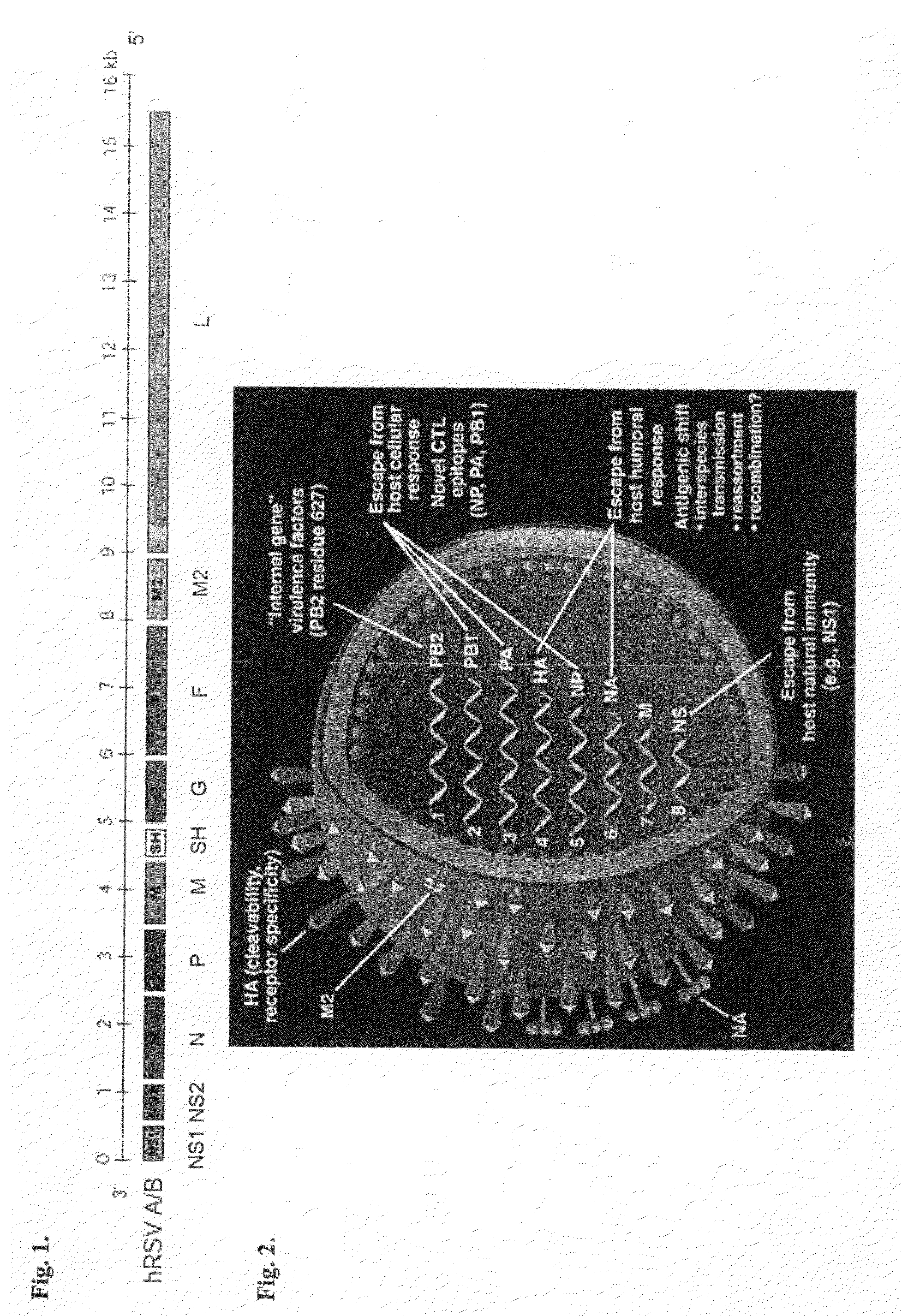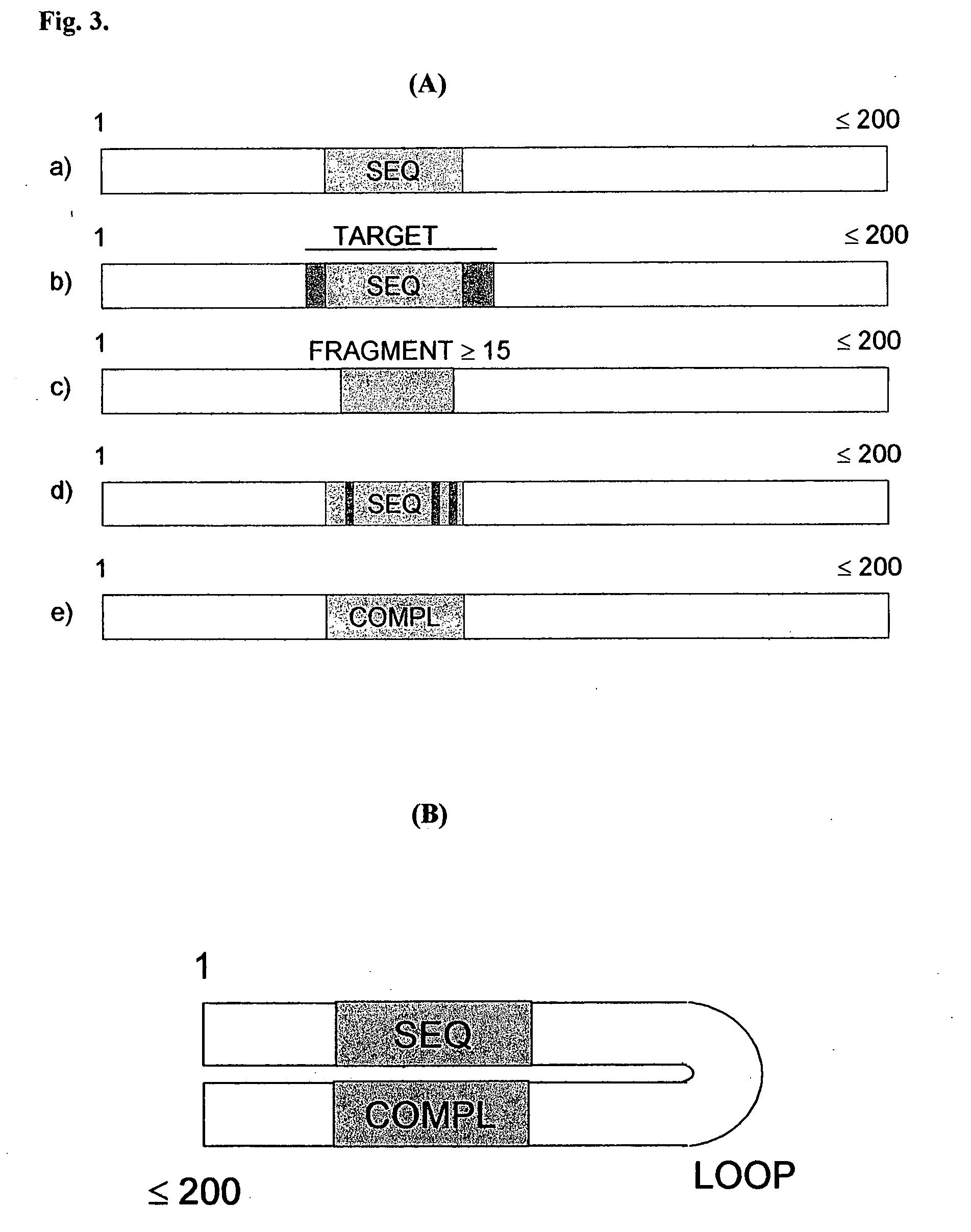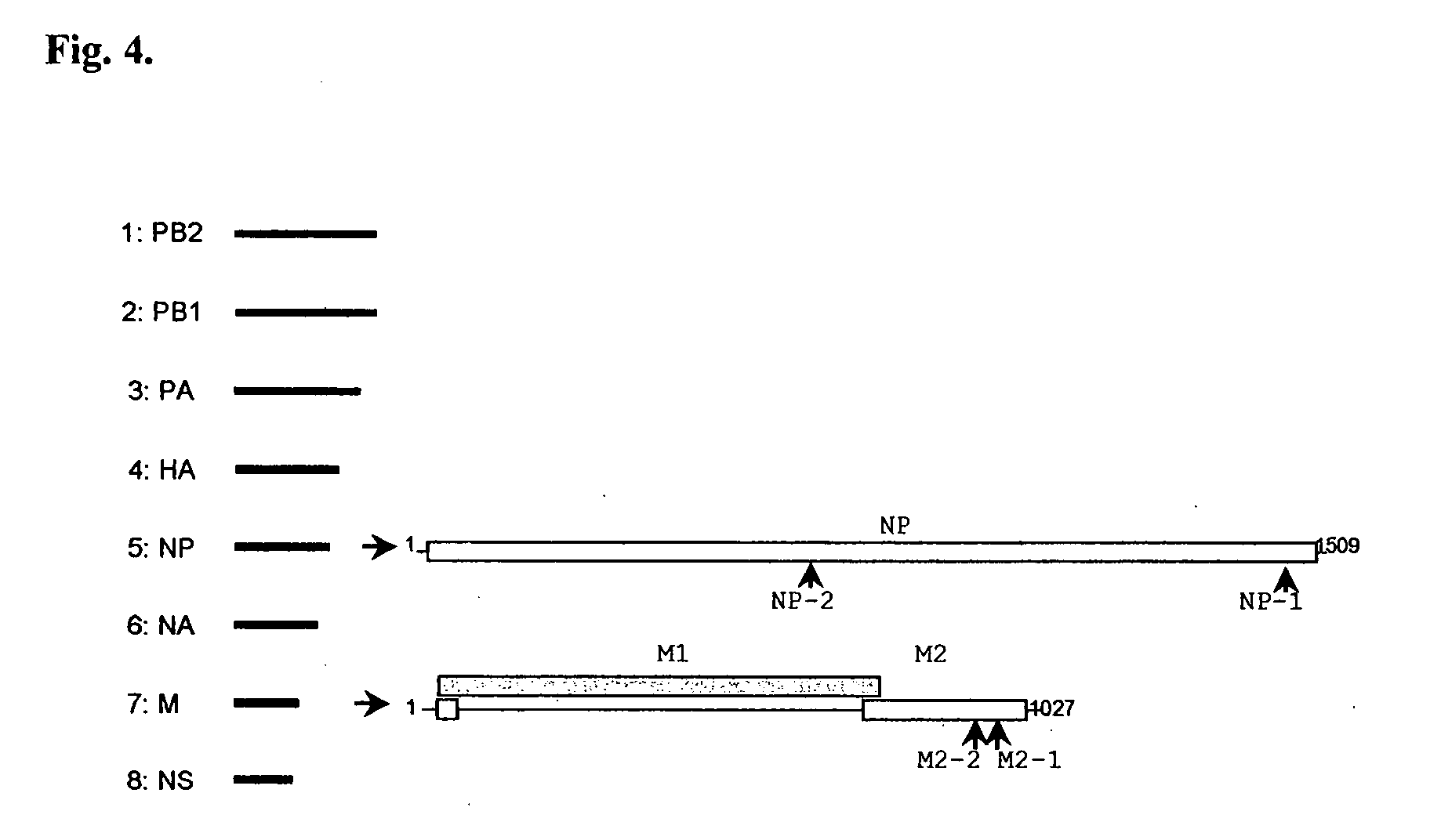Compositions For Treating Respiratory Viral Infections and Their Use
a technology for respiratory viruses and compositions, applied in the field of compositions can solve the problems of no specific and effective treatment available for treating respiratory viral infections, increased risk of mutation, and significant threats to human health and lives for centuries, and achieves the effect of promoting cleavage of the pathogen genomic rna and high degree of similarity or identity
- Summary
- Abstract
- Description
- Claims
- Application Information
AI Technical Summary
Benefits of technology
Problems solved by technology
Method used
Image
Examples
example 1
Effect of anti-H5N1 Influenza A siRNA Molecules on Cell Culture
[0139]This Example reports evaluation of the inhibitory effects of siRNAs on H5N1 infected cells in culture.
[0140]Design and Synthesis of siRNAs
[0141]Two siRNAs respectively targeting the NP(NP-1 & NP-2; Table 19, SEQ ID NOS:) and M2 (M2-1 & M2-2; Table 19, SEQ ID NOS:) genes of H5N1 were developed. These siRNAs target sequences conserved in several strains of H5N1 virus (e.g. gi|47834945—10-1506, gi|8452827—1-1497, gi|13925158—46-1542, gi|61927237—46-1542, gi|59940391—44->1535, gi|9802277—46-1542). The ds-siRNA, fluorescein-labeled at the 5′-sense strand, were chemically synthesized by Proligo BioTech Ltd (Paris, France). Their anti-H5N1 effects were detected in siRNA-transfected MDCK cells (Madin-Darby canine kidney; ATCC® Number: CCL-34, Manassas, Va.) infected with H5N1 virus. The inhibition of H5N1 was determined by cytopathic effects (CPE), back titration of the released virus in culture media by standard TCID50 (5...
example 2
Combinations of siRNA Directed against H5N1 Influenza A
[0155]Combinations of siRNAs directed against different genes in the H5N1 genome were identified in order to provide effective anti-H5N1 activity. This Example presents two such combinations.
Combination A:NP-1:5′-GGAUCUUAUUUCUUCGGAG(dTdT)-3′,(SEQ ID NO:256)M2-1:5′-ACAGCAGAAUGCUGUGGAU(dTdT)-3′,(SEQ ID NO:260)andHA-1:5′-TGGTAGATGGTTGGTATGG(dtdt)-3′.(SEQ ID NO:221,bases 3-21,plus 3′terminal(dtdt))Combination B:NP-1:5′-GGAUCUUAUUUCUUCGGAG(dTdT)-3′,(SEQ ID NO:256)M2-1:5′-ACAGCAGAAUGCUGUGGAU(dTdT)-3′,(SEQ ID NO:260)andNA-1:5′-TCTGTATGGTAATTGGAAT(dtdt)-3′.(SEQ ID NO:230,bases 3-21,plus 3′terminal(dtdt))
example 3
Inhibition of Target Genes and Viral Replication in Cells In Vitro by siRNA
[0156]In this Example optimally effective siRNAs, and optimally effective combinations of siRNAs, targeting different respiratory viral genes in their ability to silence the cognate target gene(s) or inhibiting viral replication, are identified by experiments in cell culture. The siRNAs effective in vitro are to be candidates to be further tested and used in vivo.
[0157]Cultured permissive cell lines, such as, by way of nonlimiting example, A549 (ATCC® Number: CCL-185™, a type II alveolar epithelial lung carcinoma cell line) are infected with an RSV viral strain or an influenza A strain such as H5N1, and then are transfected with various siRNAs either individually or in combination. In the case of combinations, two siRNAs targeting one single gene, or a combination of siRNAs targeting two or more genes are to be employed. The total siRNA dosage of single or combination of siRNAs is kept the same. In different ...
PUM
| Property | Measurement | Unit |
|---|---|---|
| pH | aaaaa | aaaaa |
| pH | aaaaa | aaaaa |
| time | aaaaa | aaaaa |
Abstract
Description
Claims
Application Information
 Login to View More
Login to View More - R&D
- Intellectual Property
- Life Sciences
- Materials
- Tech Scout
- Unparalleled Data Quality
- Higher Quality Content
- 60% Fewer Hallucinations
Browse by: Latest US Patents, China's latest patents, Technical Efficacy Thesaurus, Application Domain, Technology Topic, Popular Technical Reports.
© 2025 PatSnap. All rights reserved.Legal|Privacy policy|Modern Slavery Act Transparency Statement|Sitemap|About US| Contact US: help@patsnap.com



